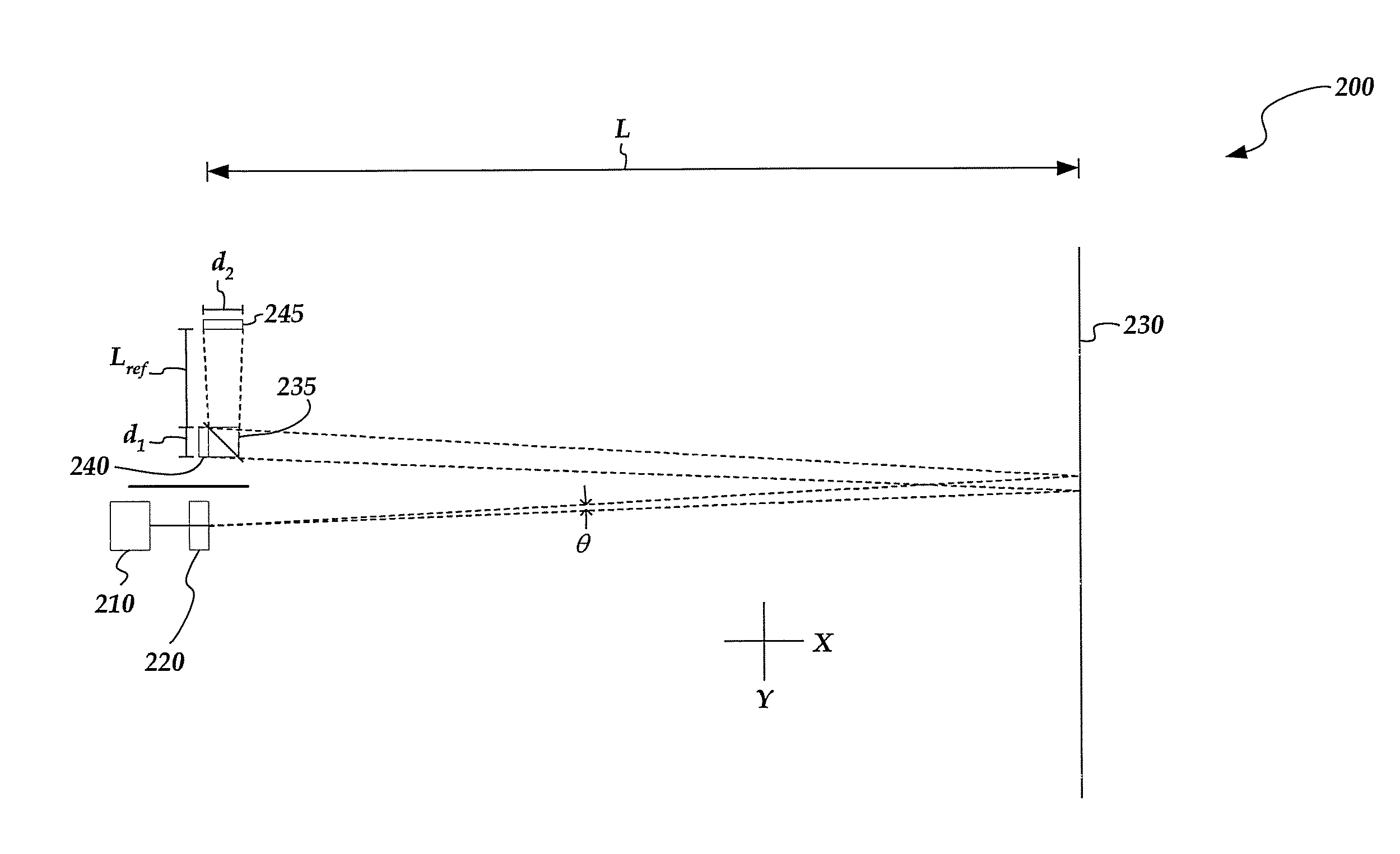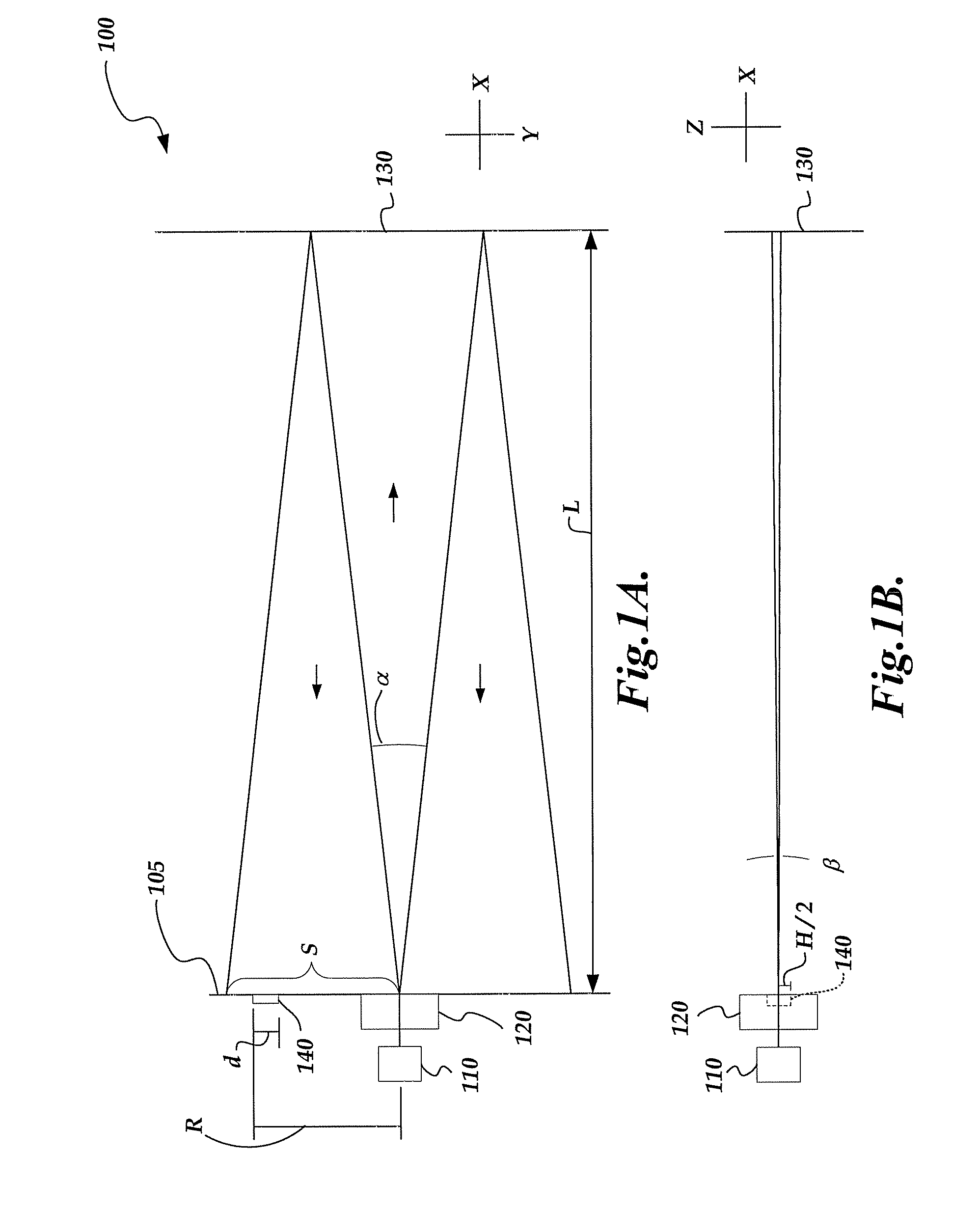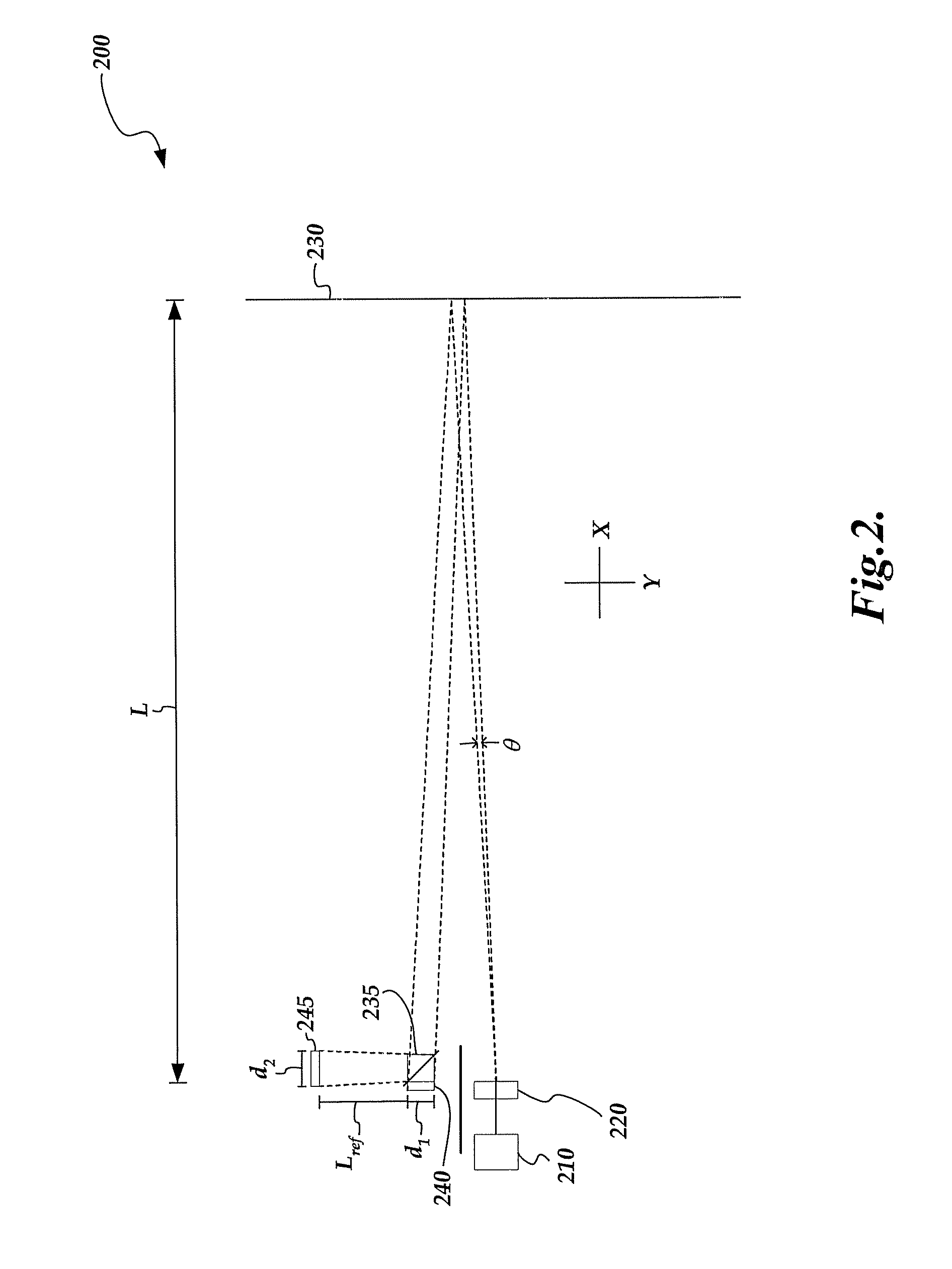Range sensor using structured light intensity
a sensor and light intensity technology, applied in the field of precision measurement instruments, can solve problems such as contributing to the complexity of position calculations, and achieve the effects of reducing the sensitivity of the signal to the optical power of the source and to temperature fluctuations, and low cos
- Summary
- Abstract
- Description
- Claims
- Application Information
AI Technical Summary
Benefits of technology
Problems solved by technology
Method used
Image
Examples
Embodiment Construction
[0019]FIGS. 1A and 1B are diagrams of top and side views, respectively, of one exemplary embodiment of a range sensor 100 using structured light intensity for determining displacement measurements in accordance with the present invention. As shown in FIG. 1A, a source 110, beam structuring element 120 and detector 140 are shown proximate to a detector plane 105. In one embodiment, the source 110, beam structuring element 120 and detector 140 are fixed to a body (not shown) of the sensor 100. The source 110 may in certain embodiments be a light source such as a laser, VCSEL, LED, etc. In one embodiment, the beam structuring element 120 may comprise a lens and a line generator, in which case the light from the source 110 is collimated by the lens and is directed through the line generator. In one embodiment, the beam from the beam structuring element 120 is reflected by a mirror 130. After the beam is reflected by the mirror 130, a portion of the reflected light is received by the det...
PUM
 Login to View More
Login to View More Abstract
Description
Claims
Application Information
 Login to View More
Login to View More - R&D
- Intellectual Property
- Life Sciences
- Materials
- Tech Scout
- Unparalleled Data Quality
- Higher Quality Content
- 60% Fewer Hallucinations
Browse by: Latest US Patents, China's latest patents, Technical Efficacy Thesaurus, Application Domain, Technology Topic, Popular Technical Reports.
© 2025 PatSnap. All rights reserved.Legal|Privacy policy|Modern Slavery Act Transparency Statement|Sitemap|About US| Contact US: help@patsnap.com



